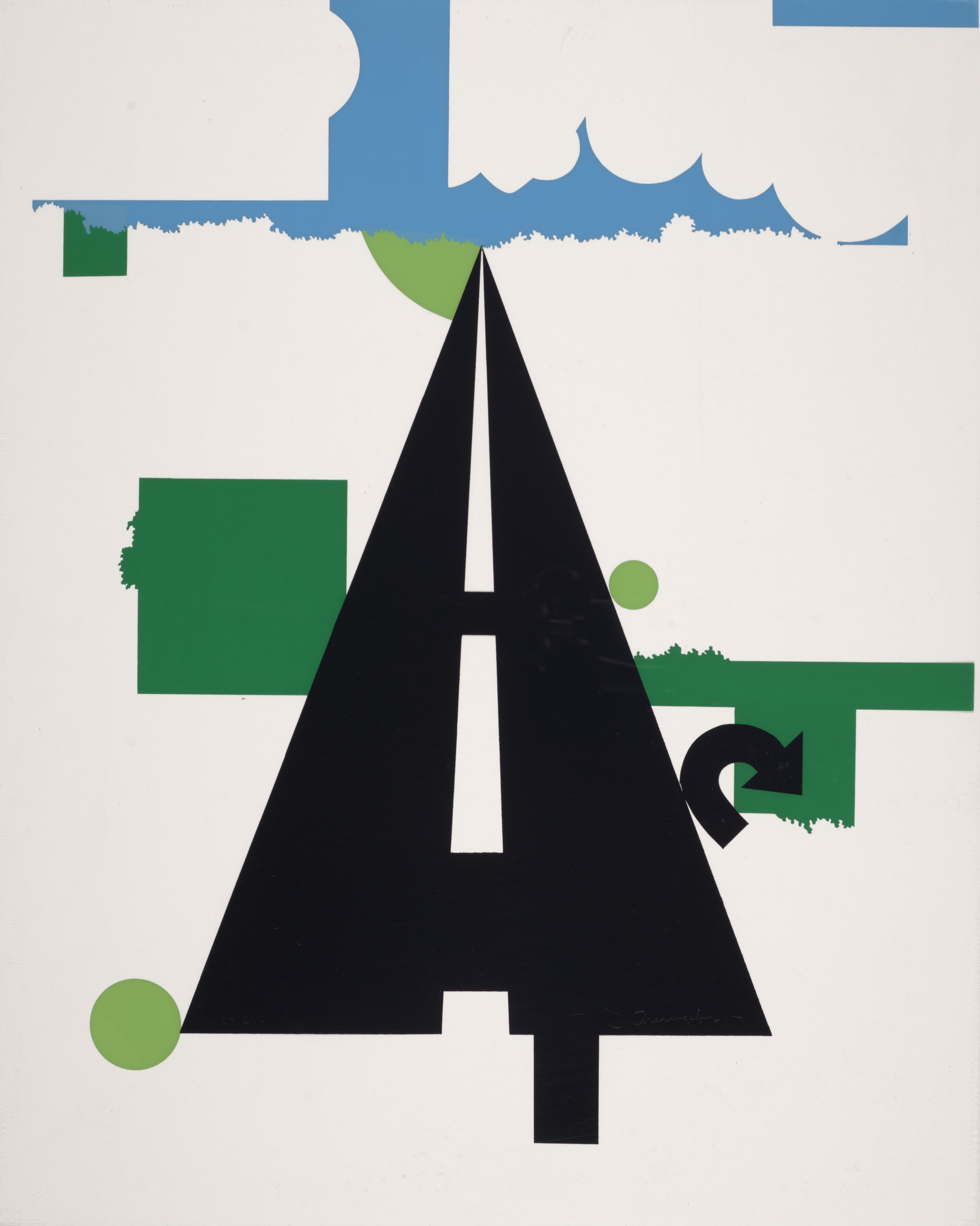This exhibition is curated by Zack Boehler, Assistant Curator, Special Projects, Buffalo AKG Art Museum.
Friday, November 7, 2025–Sunday, April 26, 2026

Installation view of Allan D’Arcangelo: Landscapes and Constellations. Photo: Brenda Bieger, Buffalo AKG Art Museum
A consistent inspiration for many artists, writers, and dreamers, the myth of the American expanse remains as embedded in our collective psyche as it remains hard to define. For many, the open road has been a symbol of freedom, especially in the post-World War II highway boom. Americans were able to travel great distances, often for leisure, like never before.

Allan D’Arcangelo (American, 1930–1998) was one such traveler of this new, monotonous highway looking for that undefined freedom. Raised in Buffalo, New York, and a graduate from the University at Buffalo, D’Arcangelo began crisscrossing the country on trips to Los Angeles and Mexico City in the late 1950s. Eventually settling in New York City, D’Arcangelo’s experience of the road became a source for the works that catapulted him into the top tier of the 1960s Pop art scene.
What he found, and what we see in these Landscapes and Constellations, was not limitless freedom but instead the obstacles that bar access to open space. D’Arcangelo’s vision of the road was one where advertising interrupted nature with the promise of trivial desires just ahead. Where the desired expanse is always kept behind the glass of a windshield or deferred by signs that constrain your direction. As he continued to work through these themes into the late 1960s, D’Arcangelo begins to remove the recognizable components of the traditional landscape. Gone are the horizon lines and trees, in landscapes reduced to just the striping found on a roadway. Repeating lines of concrete barriers no longer symbolize movement, just where one cannot go.
By the mid-1970s, D’Arcangelo had retreated from the art world of New York City to a farm in the Hudson Valley. He continued to make work until his passing in 1998. D’Arcangelo’s images challenge the version of Americana so many are raised on, but this critique is not solely a dismissal of unfulfilled promise.
This exhibition is curated by Zack Boehler, Assistant Curator, Special Projects, Buffalo AKG Art Museum.